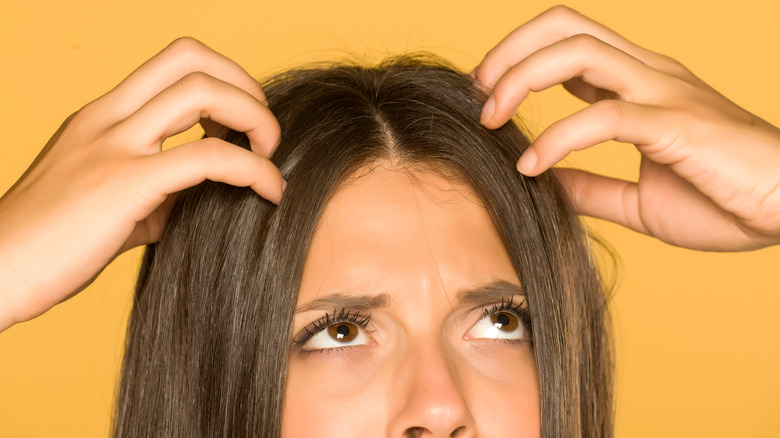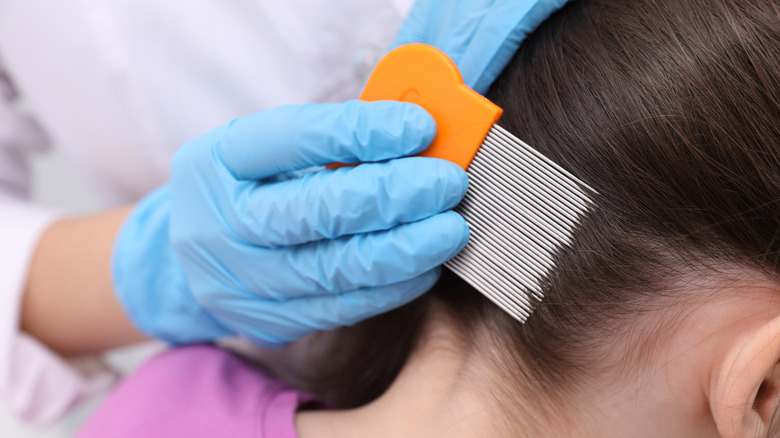The First Thing You Should Do If You Find Lice On Your Head
Ready to be creeped out? Imagine unexpectedly feeling something move in your hair. When you touch the spot, you don't feel anything, but then, it happens again. Your scalp starts to itch, and you can't stop scratching it. Upon close examination, you find several tiny six-legged parasites crawling through your hair. You've got lice.
While it's true that anyone can get lice, this scenario is actually more likely to affect your child, since head lice are most commonly found on children between the ages of 3-11 (via Johns Hopkins Medicine). Finding lice in your child's hair, or lice eggs (nits) glued to the base of the hair shaft is gross, but it's actually pretty common. According to the U.S. Centers for Disease Control and Prevention, there are between 6-12 million cases of head lice found on the head of kids between 3-1 in the U.S. each year.
As creepy as the thought of lice is, there's no cause for panic. Lice can happen to anyone, and it doesn't have anything to do with how clean your house is or how often your child takes a bath. Lice don't jump, but they do crawl fast, and they spread easily through head-to-head contact. You can also get lice by coming into contact with items that have touched the head of a lice-infected person — think brushes, combs, and blankets. Thankfully, lice are not known to carry any diseases. Still, you want them gone, ASAP.
Lice treatments may have to be repeated
There are several options for treating lice. Since lice need to feed on human blood once or twice a day to survive, head lice can't survive away from the head for more than a day or so (via Johns Hopkins Medicine). "After about a day without a meal they starve to death," Harvard entomologist Dr. Richard Pollack told WebMD. That being said, one way of getting rid of them fast is by destroying their habitat by shaving the head.
If that option is a bit extreme, there are over-the-counter lice-killing gels, mousses, and shampoos available. Since these products often kill live lice but not necessarily the nits, a second treatment will be needed 10 days after the first to kill lice that have hatched since the initial treatment.
There are also some more natural treatment options, including lice-killing essential oils, and "smothering" treatments involving oil or mayonnaise (via Dr. Axe). Regardless of which treatment you choose, it needs to be combined with frequent and thorough vacuuming of the floors and furniture in the house. You will also need to wash bed sheets, blankets, pillowcases, and any other items that have come in contact with the infected head in hot water.
"A good rule of thumb is this: If no live crawling insects are seen three weeks after the treatment, it's safe to assume that you are in the clear," said Johns Hopkins pediatric dermatologist Dr. Bernard Cohen.


